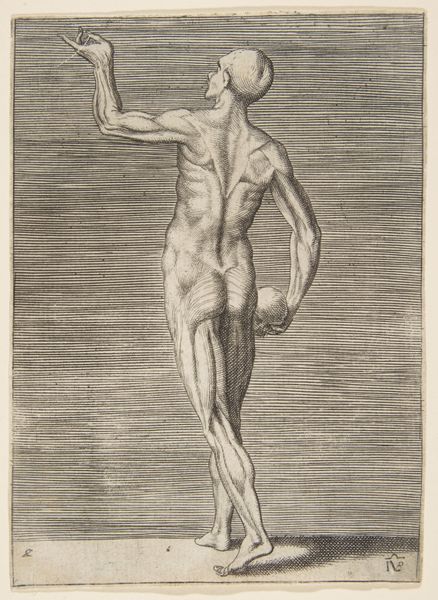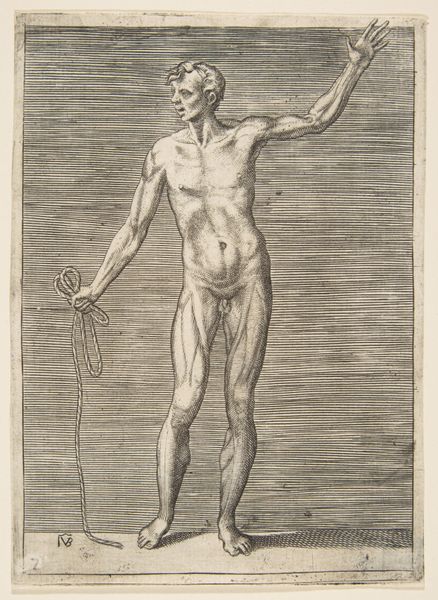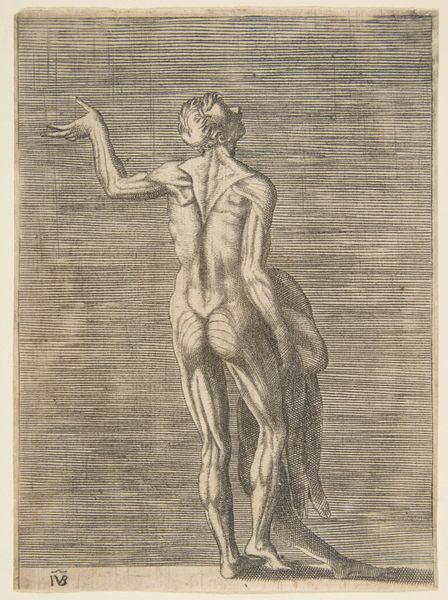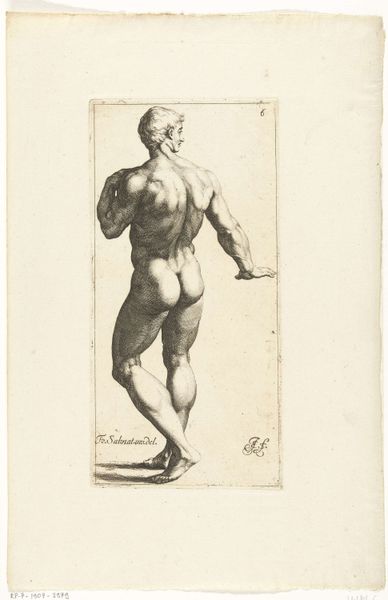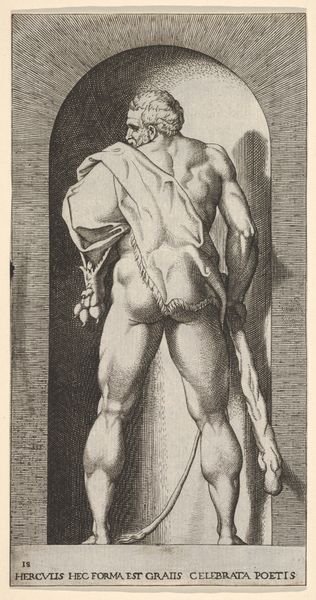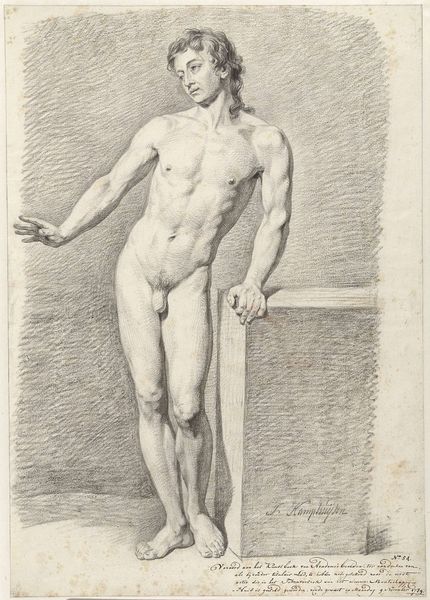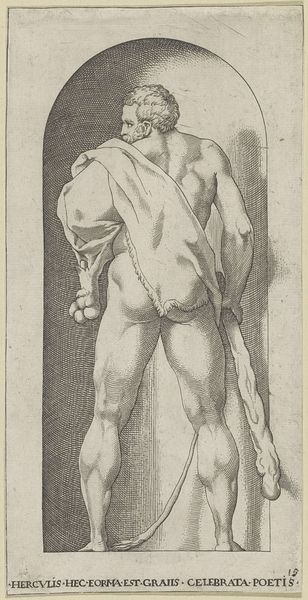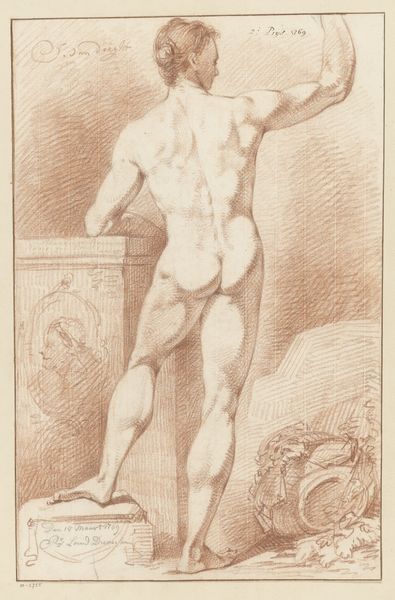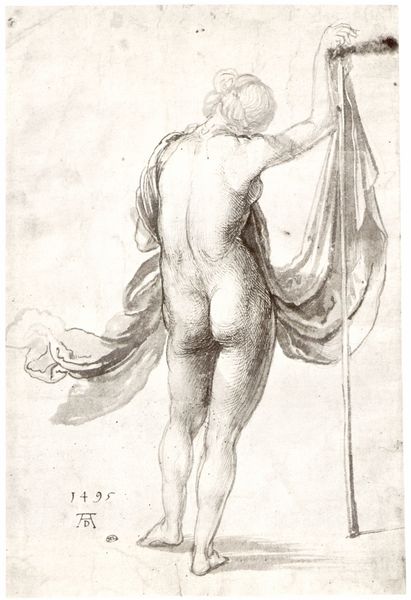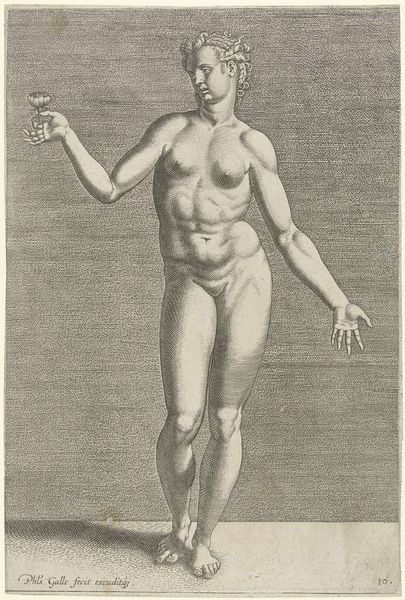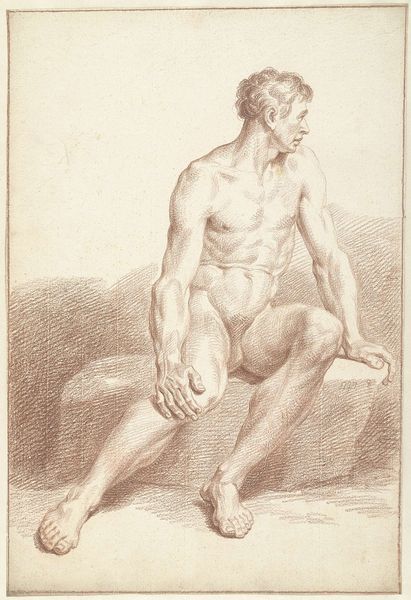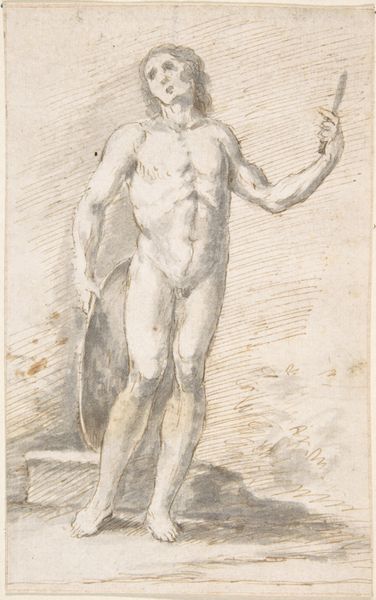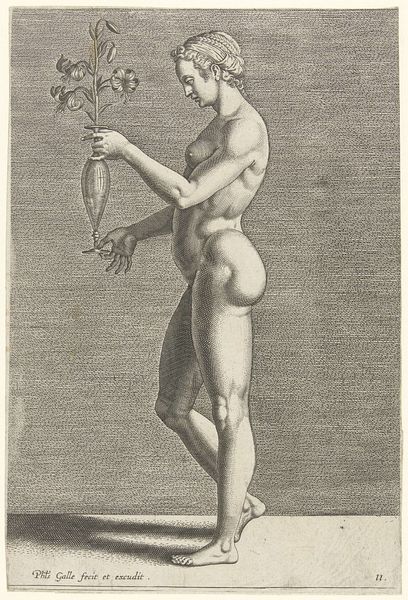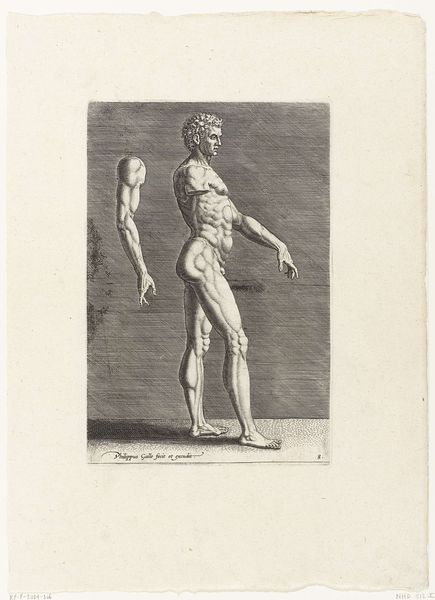
drawing, print, engraving
#
drawing
# print
#
mannerism
#
figuration
#
nude
#
engraving
#
male-nude
Dimensions: sheet: 5 7/8 x 4 5/16 in. (15 x 11 cm)
Copyright: Public Domain
Giulio Bonasone created this print, Flayed Man Seen from Behind, around the mid-16th century. The figure's skin has been removed, revealing the intricate muscular structure beneath. Notice how Bonasone uses precise lines to define the contours of the muscles, creating a sense of depth and volume on the flat surface. The horizontal lines in the background accentuate the three-dimensionality of the figure. The flayed skin, held casually in the figure’s hand, introduces a visceral element that is both anatomical and theatrical. The artwork is deeply rooted in the Renaissance interest in human anatomy, and, through this, the rediscovery of classical art and science. Yet, by displaying the body in such a state, Bonasone compels us to question the relationship between surface and depth, beauty and grotesqueness. The image destabilizes conventional notions of the ideal human form. The formal tension between the detailed musculature and the detached skin creates an unsettling yet compelling image, urging us to consider the layers of meaning beneath the surface of representation. Art challenges fixed ideas and prompts an ongoing re-evaluation of established values.
Comments
No comments
Be the first to comment and join the conversation on the ultimate creative platform.
